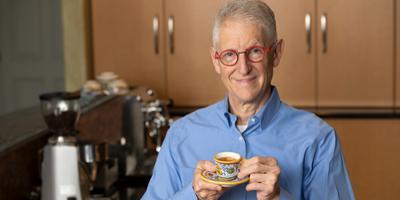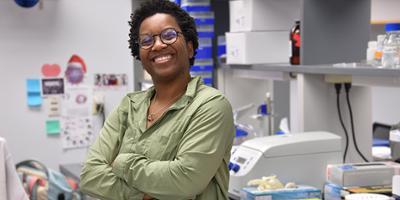Hospital care, but in your home
BY AMBER SMITH
Some Medicare patients at Upstate University Hospital are able to continue receiving hospital care in the comfort of their homes through the aptly named Hospital at Home program.
Patients who want to participate must have stable medical conditions that require hospital care. And they must have a safe home, with support from family or friends. “They meet criteria to be hospitalized but are stable enough to be cared for in the home setting,” describes nurse Diane Nanno. She is the director of nursing for Upstate’s Transitional Care Services, and she helped establish Upstate’s Hospital at Home program.
(To hear Nanno explain the program more in depth, click here.)
Suzanne Kline’s husband, Peter, was hospitalized after a fall in February 2023. He was found to have an infection that required intravenous antibiotics. When she heard that he could recover at home but still technically be a hospital patient, she was all for it.
“Nobody wants to be in the hospital,” Kline says. “If they can be in their own home, I would think that mentally it would speed the recovery.”
Since she was retired, she was able to care for him in their home in the hamlet of Lyncourt, just north of Syracuse.
A nurse came every morning between 8 and 9 a.m. “She was punctual,” Kline says. “And between 8 and 9 p.m. the same nurse would call to check to make sure how everything was going. And I had her cell number.”
Kline says her husband still has some health concerns, but he’s better.
With hospital capacity a critical concern during the pandemic, the federal Centers for Medicare and Medicaid Services encouraged hospitals to apply to begin Hospital at Home programs for certain patients on Medicare, the government health plan for seniors and people with disabilities.
Elsewhere in the country, hospitals already had experience with these programs and reported that 30-day readmission rates were reduced, along with a drop in emergency department utilization. And, patients in the programs were pleased.
The program is not designed to save the hospital money, but it does allow for more patients to receive hospital care, Nanno says.
Marjorie “Marge” Kearney spent Christmas Day 2022 with her family in Geddes. Back at her independent-living apartment that evening, she fell, breaking her hip. At the hospital, doctors also discovered a problem with her heart.
A social worker told her family about Hospital at Home.
Her daughter-in-law, Kathy Kearney, is a nurse who retired from Upstate before Hospital at Home was offered. “We brought her home. The nurse showed up. Dr. (Timothy) Creamer showed up. The medications showed up. The bed showed up. I couldn’t have asked for a better experience.”
Nurses visited twice a day. She could reach a medical provider via iPad at any time. Kearney, 96, was comfortable. Several days later, she transitioned into hospice care. She died on Jan. 8, 2023.
Kathy Kearney says the move from hospital, to home, and then into hospice was seamless. “It was so smooth and coordinated. I was truly impressed.”
She knew Timothy Creamer, MD, when she worked at Upstate. Creamer worked in primary care, making house calls with some regularity, before he launched the hospitalist program in 2001 at what was then called Community-General Hospital. Hospitalists are medical providers who focus care on hospitalized patients.
The Community campus is now part of Upstate, and Creamer now oversees the Hospital at Home program. He often visits patients in their homes or talks with them via iPad.
The home care agency Nascentia Health provides care for Upstate’s Hospital at Home patients, and Nunn’s Home Medical Equipment provides the medical equipment.
“This is an incredible, innovative option for those patients who require acute hospital care and are stable enough to be cared for at home,” Nanno says.
This article appears in the 2024 Upstate Health magazine, Issue 1.





